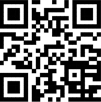National standards of People's Republic of China
Plywood General technical conditions for ordinary plywood
1 Subject content and scope of application This standard specifies the general technical conditions of ordinary plywood defined by GB9846.2.This standard applies to plywood consisting of at least three layers of veneer.This standard does not apply to veneer plywood and special plywood.
2 Reference standard GB 9846.1 plywood classification GB 9846.2 Plywood terms and definitions GB 9846.3 Plywood general plywood dimensions and tolerances technical conditions GB 9846.5 plywood general plywood appearance grade technical conditions GB 9846.11 determination of plywood moisture content GB 9846.12 plywood plywood strength Determination
3 Structure of the board
Usually the wood grain of two adjacent veneers should be perpendicular to each other.
The veneers on the symmetric layers on both sides of the center layer should be the same thickness,the same tree species or the tree species with similar physical properties and the same production method(that is,all are rotary cut or all sliced),and the wood grain configuration direction should also be the same.
Two-layer veneer with parallel wood grain direction is allowed to be combined into two layers as the center layer.When testing the bonding strength,the two-layer veneer is regarded as one layer.
The same layer of surface board should be the same tree species,and the surface board should face tightly outward.
Non-porous adhesive tape for jointing shall not be used inside plywood.If it is used to splice the first-and second-class panels or to repair the cracks of the first-and second-class panels,the tape should be removed and no obvious tape marks should be left afterwards,but the second-class plywood panels of conifer wood are allowed to leave The total length of the adhesive tape shall not exceed 15%of the board length.
Under normal dry conditions,the surface thickness of the broad-leaved plywood should not exceed 3.5 mm,and the thickness of the inner veneer should not exceed 5 mm.The thickness of the inner layer and surface veneer of conifer wood plywood should not exceed 6.5mm.
Veneers of each layer of plywood are not allowed to be terminated without bevel bonding or finger splicing.
There should be no inclusions in the plywood that affect the use,that is,it does not affect the smoothness of the board surface,does not affect the finish treatment,and does not affect the quality of the plywood.
4 Processing quality Plywood should have right angles and straight edges,and its dimensions and tolerances should meet the requirements of GB9846.3.
5 Features of the watch plate
According to the appearance grade,the watch panel can be a whole veneer,or it can be splicedtogether along the edge by several veneers of equal or unequal width.
Stitching,color matching and allowable defects should all comply with the provisions of GB9846.5.
6 Features of inner layer veneer
The inner veneer of plywood should include splicedor non-splicedveneers of any width.
Inner layer veneer is allowed to contain material defects and processing defects,but should be in accordance with the provisions of GB9846.5,without affecting the appearance and applicability required for plywood applications.
7 types
The tree species of the plywood panel is the tree species of the plywood.a.Commonly used domestically broad-leaved tree species include Basswood,Fraxinus mandshurica,Birch,Lotus,Poplar,Elm,Oak,Maple,Alder,Maple,etc.:b.Commonly used domestic shiba species are Masson pine and Yunnan pine.Larch,spruce,etc.
Common plywood is divided into four categories.a.Class 1 plywood,that is,weather-resistant biteboard;b.Type 2 plywood,namely water resistant plywood;c.Type 3 plywood,namely moisture resistant plywood;d.Type 4 plywood,namely moisture resistant plywood.
8 Physical and mechanical properties
Water content
The moisture content of plywood when shipped from the factory should meet the requirements in Table 1.Table 1 Types of moisture content of plywood Water content of plywood species Classes 1,2 and 3,4 Broad-leaved tree wood 6~148~16 Conifer tree wood
Moisture content should be measured according to GB9846.11.
Adhesive strength
All kinds of plywood bonding strength index value according to Table 2.
The bonding strength should be determined according to the provisions of GB9846.12.
For the plywood index value of plywood made with different tree species,the minimum index value for the plywood strength index value of each tree species should be taken.Table 2 Glue Strength Index ValuesCategory Plywood Tree Species Glue Strength of Single Specimens Class 1,Class 2,Class 3,Basswood,Poplar,Alnus spp.≥0.70≥0.70 Fraxinus mandshurica,Schima superba,Liquidambar formosana,Firewood,Elm Wood,oak≥0.80 Birch≥1.00 Masson pine,Yunnan pine,larch,spruce≥0.80 8.2.4 When determining the conversion coefficient of the bonding strength of the thick core veneer structure,the nominal thickness of the veneer should be used.
The plywood strength index value of plywood made from paulownia is compared with the index value of poplar as specified in Table 2.For other plywood made from broad-leaved wood or coniferous village,the plywood strength index value can be compared with that specified in Table 2 according to their density The index value of root tree,ash or pine.When imported Liu'an tree species are used as the inner veneer,the value of the plywood strength shall meet the requirements for root plywood in Table 2.If hard broad-leaved wood veneers such as Abidong,Clone,and Cinnamomum camphora are used as the inner veneer,the value of the bond strength index should meet the requirements for ash plywood in the table.
When the average wood failure rate of the test piece for the determination of the bonding strength exceeds 80%,the index value of the bonding strength may be 0.20 MPa lower than the index value specified in Table 2.
The judgment of the test results shall be carried out according to the following regulations:
When the number of test pieces that meet the requirements of the bonding strength index value is equal to or greater than 80%of the total number of effective test pieces,the strength of the glue table of the batch of glue wrenches is judged as qualified.
When the number of test pieces that meet the requirements of the glue strength index value is less than 80%of the total number of effective test pieces,re-inspection is allowed once.To be qualified,if the number of qualified test pieces for re-examination is still less than 80%of the total number of valid test pieces,the bonding strength of the batch of plywood is judged as unqualified.










